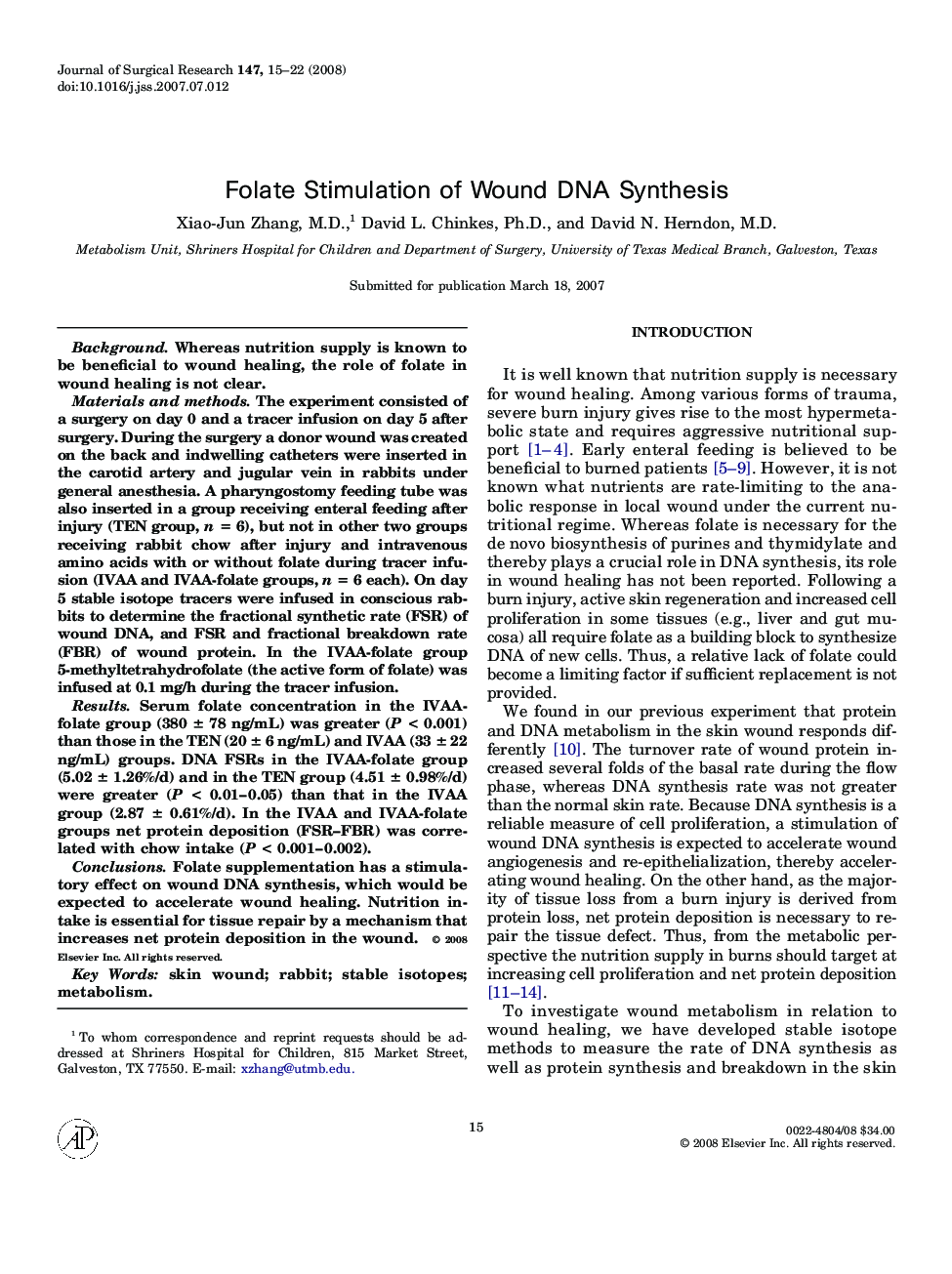| Article ID | Journal | Published Year | Pages | File Type |
|---|---|---|---|---|
| 4304398 | Journal of Surgical Research | 2008 | 8 Pages |
BackgroundWhereas nutrition supply is known to be beneficial to wound healing, the role of folate in wound healing is not clear.Materials and methodsThe experiment consisted of a surgery on day 0 and a tracer infusion on day 5 after surgery. During the surgery a donor wound was created on the back and indwelling catheters were inserted in the carotid artery and jugular vein in rabbits under general anesthesia. A pharyngostomy feeding tube was also inserted in a group receiving enteral feeding after injury (TEN group, n = 6), but not in other two groups receiving rabbit chow after injury and intravenous amino acids with or without folate during tracer infusion (IVAA and IVAA-folate groups, n = 6 each). On day 5 stable isotope tracers were infused in conscious rabbits to determine the fractional synthetic rate (FSR) of wound DNA, and FSR and fractional breakdown rate (FBR) of wound protein. In the IVAA-folate group 5-methyltetrahydrofolate (the active form of folate) was infused at 0.1 mg/h during the tracer infusion.ResultsSerum folate concentration in the IVAA-folate group (380 ± 78 ng/mL) was greater (P < 0.001) than those in the TEN (20 ± 6 ng/mL) and IVAA (33 ± 22 ng/mL) groups. DNA FSRs in the IVAA-folate group (5.02 ± 1.26%/d) and in the TEN group (4.51 ± 0.98%/d) were greater (P < 0.01–0.05) than that in the IVAA group (2.87 ± 0.61%/d). In the IVAA and IVAA-folate groups net protein deposition (FSR–FBR) was correlated with chow intake (P < 0.001–0.002).ConclusionsFolate supplementation has a stimulatory effect on wound DNA synthesis, which would be expected to accelerate wound healing. Nutrition intake is essential for tissue repair by a mechanism that increases net protein deposition in the wound.
